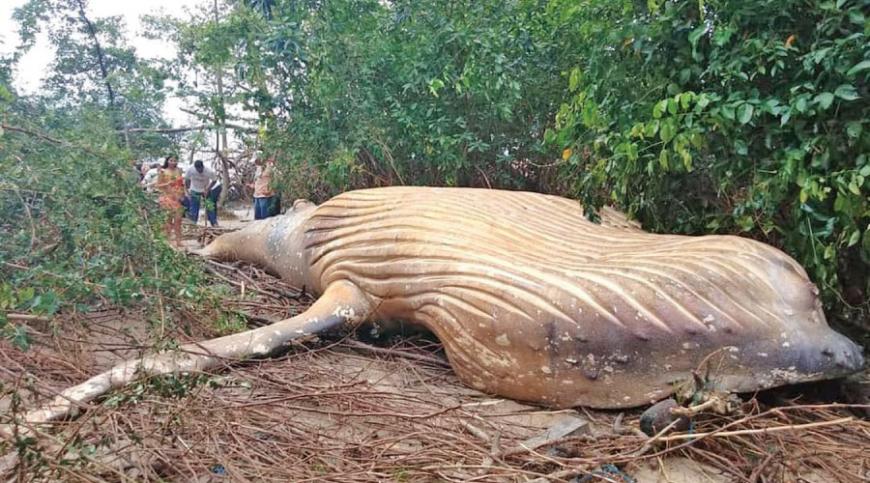
The dead humpback whale lying in an Amazon rainforest clearing distils our knowledge that human actions have changed the climate and polluted the oceans
There could scarcely be a sadder image of nature in chaos. A young humpback whale lies flat out in a forest clearing made by its own bulk. If it had sunk in the sea, this whale would be food for hagfish and cookie cutter sharks. Instead its yellowed, sagging blubber has been pecked at by birds. What baffling force could have thrown this giant ocean mammal into the Amazon rainforest?
It’s the kind of prodigious sight that previous ages would have interpreted as an omen – and we still can’t resist seeing it that way. The sheer out-of-placeness of this poor juvenile stranded in death without the sea in sight is even more disconcerting than a pod of whales washed up on a beach or alone cetacean in the Thames. It shows how the medieval cosmology of the four elements lodges in our imaginations: how has a creature of the water ended up on the earth? Or to put it in the more contemporary language of conspiracy theories: this dead sea mammal is very fishy. Perhaps it was taken by aliens to be probed, and then dumped here. Maybe it was airlifted by the deep state for reasons of its own.
More reasonably, this image distils our knowledge that human actions have changed the climate, polluted the oceans and ransacked the rainforest. A whale in the Amazon rainforest conjoins two natural wonders that humanity threatens, two immense habitats we risk destroying. Modern whaling regulations have allowed a heartening recovery by humpback whales, but they are as vulnerable as any other species to changes in the seas. It has been suggested this youngster may have suffocated after inhaling plastic. The Amazon rainforest itself has long been in crisis. More than 3,000 sq miles were deforested between summer 2017 and spring 2018, according to the Brazilian government’s own figures – the highest rate of destruction ever recorded. We feel all of this when we look at this uncanny displacement.
In reality, this mystery is not quite as profound as the headlines imply. The whale was found in a mangrove swamp on the island of Marajó in the Amazon delta. Presumably a storm hurled its carcass deep into the swamp. Yet even if this falls short of a mystery that needs UFOs or the Illuminati to explain it, this surreal and wretched sight has the kind of power that we can’t always get from reading data on sea temperature rises. The scientific evidence that we are pushing nature to its greatest crisis since the extinction of the dinosaurs is abundant. We should be grateful to this whale for giving us an image of the colossal tragedy we are making of our world. A whale in a forest is no more unnatural than plastic on a beach.
Disconcerting out-of-placeness ... the humpback whale in the Amazon rainforest
